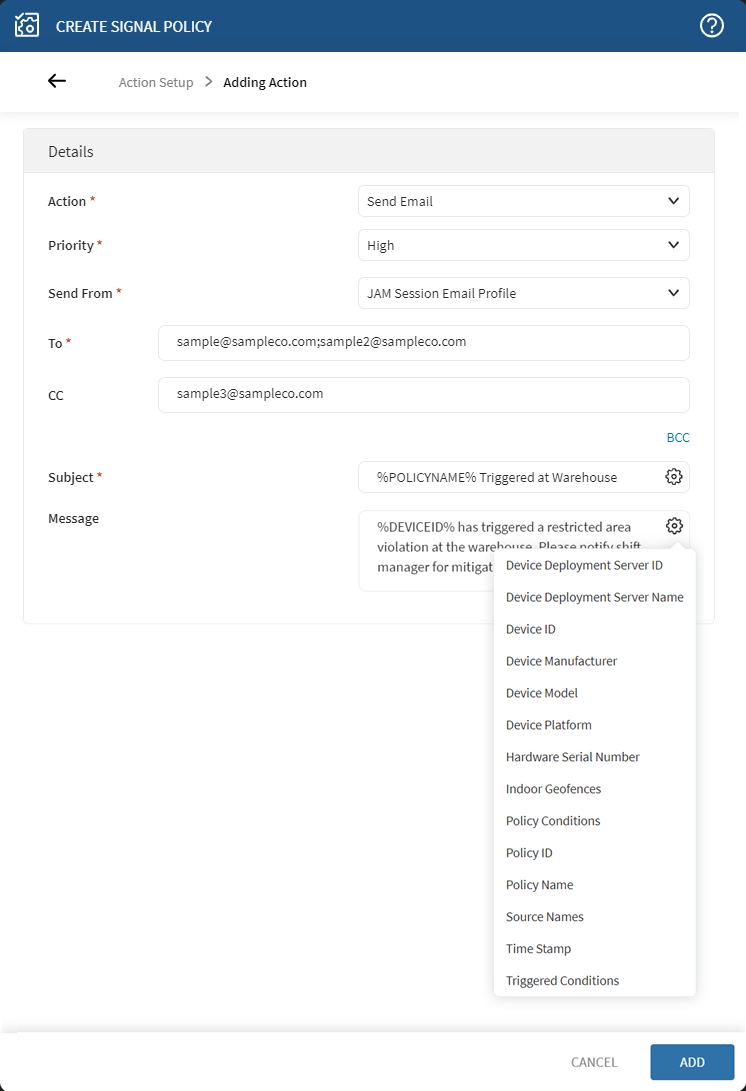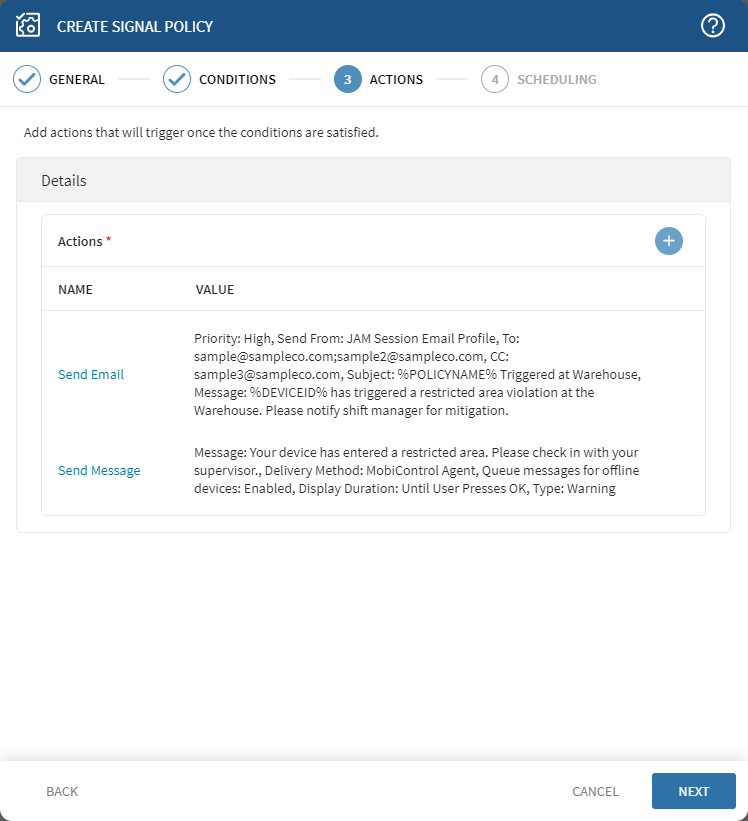Adding Signal Policy Actions
About this task
Procedure
- From the Actions step of the Signal policy wizard, select Add Action.
-
Select one of the following options from the Action list:
Option Description Send Script Important: This selection only applies to conditions that include managed devices. Starting version 2024.1.0, SOTI MobiControl has a Device Initiated option to enable device side evaluation and execution of Legacy scripts on supported devices. See Configuring Signal Policy Settings - Device Side Evaluation.Send the following types of scripts to devices when the action triggers:
- Legacy
- JavaScript
- PowerShell 32-bit Compatibility
- PowerShell Native
Choose a script from the Execute Following Script list, then select its delivery method.Note: The Execute Following Script list populates from the Manage Scripts dialog box comprising earlier saved scripts. See Manage Scripts and Sending Scripts to Devices.Send Email Send an email alert to recipients indicating the policy triggered. Add email contacts to the To, CC, and BCC fields.Important: Separate the addresses with a semicolon, and do not space them.Use the Macro button in the Subject and Message fields to add dynamic information, such as Device ID or Policy Name to the email.
Send Message Send a message directly to devices that the policy triggers. You can limit the message's Display Duration on the devices and choose a Type of message, such as Error or Warning.
Relocate Device Automatically move devices that trigger the policy from their current device group to another of your choice.
Trigger Alert Drive an alert to the SOTI MobiControl notification panel.
Use the Macro button in the Alert Title and Message fields to add dynamic information such as Device ID or Policy Name to the alert.
Trigger Webhook Send automated JSON or XML data to a URL when the policy triggers. From Webhook, select a predefined webhook. Specify a Subject for the destination URL and select Source Attributes to include it in the payload. Important: You can define webhooks in . See Using Signal Policies to Trigger Webhook Actions for information on using a Signal policy to trigger a webhook.CAUTION: When applying platform-agnostic actions such as Send Email or Trigger Alert, make sure you limit their use. For example, a policy with two condition groups where either group can often be True may result in too many emails or alerts. Device-specific actions such as Send Script or Send Message only trigger for the Managed Devices condition group, but can still occur often.Note: In a policy with two or more Managed Devices condition groups, device-specific actions only trigger on members of device group(s) in the condition group. The Source Names macro shows the object(s) that triggered the action. For example, if the condition triggers when a device enters a geofence, the Source Names macro shows the device name and the location. For example, Device: A0510BAC99B9, geofence: Restricted Zone.
-
Select Add to save your action. Add actions as
needed.
